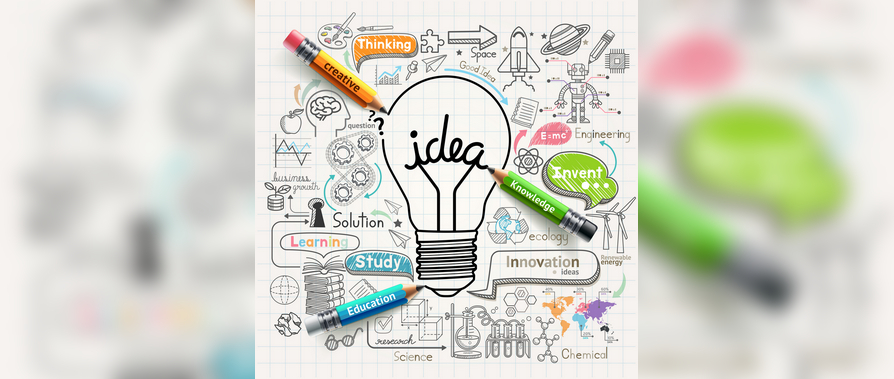An Article From the Archives:
Shedding old paradigms to find new ways of working is often one of the biggest challenges to continuous improvement. In this month’s From the Archives we revisit a short article that originally appeared in our “Total Employee Involvement (TEI)” newsletter back in June of 1992. In the article, Joel Barker, the individual responsible for bringing the concept of paradigm shifts to the corporate world, outlines 10 tactics for overcoming resistance to innovation. We find these same 10 tactics are pertinent to overcoming resistance to change in general and are very relevant even today.
Innovation and resistance. They seem to go together, whether you’re introducing break-through products in the marketplace or trying to get employees to accept workplace innovations. At a recent Boston seminar, Joel Barker, the guy who made “paradigm” a household word, described 10 tactics to reduce resistance to innovation.
Paradigm shifts — fundamental changes in the rules that define business boundaries - trigger innovations. In the early stages of new paradigms, people “start to solve problems and learn where the new boundaries are and what the rules of success are,” says Barker. It’s a frightening time. People are quick to label the new paradigm a failure and return to the previous one, like an old shoe. Reducing resistance to innovation can improve a company’s chances of sticking with new paradigms.
Barker describes organizations as equilibrium relationships where people enter into implicit contracts with one another not to rock the boat. But people often perceive innovations as contract breakers. He cites the case of a lumber company that started using thinner sawmill blades and thereby increased capacity. But the company’s ware houses couldn’t store the extra wood produced. That’s the type of disequilibrium innovation can create.
The key to easing resistance to innovation: look at it from the user’s perspective. “The innovator’s perspective is irrelevant,” Barker reminds us. He uses Thomas Edison’s light bulb to illustrate the following 10 tactics:
-
- Innovation must be compatible.
- It should somehow fit with what’s already there. Edison installed his light bulbs in the same locations as the gas lamps.
- The user must perceive the innovation to be simple. Edison always simplified his explanation of electricity for customers – bulb, switch and fuse box. “When users are presented with complexity, they see all the things that can go wrong.” says Barker.
- Innovations must be divisible. They should be implementable in small pieces. Edison was happy to install one light bulb at a time, rather than wiring an entire building. With innovation, says Barker, “the smaller the scale, the better off you’ll be.”
- Innovation must be easily communicable. “Describe your new idea with old language used in new ways,” says Barker. People resist new-fangled language. Edison called light sockets “electrical burners.”
- Innovation must be reversible. “You have to be able to get out of it if people don’t like it,” warns Barker. “That reduces people’s fear of taking risks.“
- You must understand – and reduce the innovation’s relative costliness. Barker reminds us that cost is not always a dollar-and-cents figure. People confronted with change see time, anxiety, fear, and frustration as potential costs.
- Innovation must connect to credibility. Reputation helps. If you’re driving innovation but the user doesn’t perceive you as a credible innovator, partner with someone who is.
- Innovations must be reliable. People don’t like to be guinea pigs. Make sure your innovation will work, that it will do what you say it will.
- Understand the failure consequences if the innovation does not work. Barker urges you to focus on consequences, not remedies. The fewer the failure consequences, the more likely the innovation will be accepted.
If you meet all of these criteria, says Barker, people will “listen carefully.” Nine out of ten will assure that “people are with you,” he says, as long as you’re not missing #1 or #10.
If you meet seven of the ten criteria, “you’re on the edge.” And if you step into the box batting less than .700, people will probably reject your idea.
TAPPING THE CREATIVE IDEAS OF NEW HIRES
Joel Barker tells this story of a Marriott Hotel manager who regularly attended orientation meetings for all new hires. One day instead of outlining the rules and policies, he asked the new people to help find better ways to do things. He invited new employees to come to his office at any time to discuss problems and solutions.
The result: he received more ideas from new hires in six months than he had from all workers in the previous six years combined. Barker calls this “the advantage of innocence.”
Then the domino effect set in: employees who’d been around a while, impressed by the initiative of the newcomers, started contributing their own ideas.
Barker encourages you to listen to halfideas from employees and help people complete them. He points out that Toyota’s legendary suggestion system, which today boasts a 90% adoption rate, started out by educating workers on how to formulate complete, implementable solutions to problems.
Look with favor upon “anyone messing with the rules,” Barker urges. “Watch for those who know sooner than others what the right thing is, and cultivate them.”


